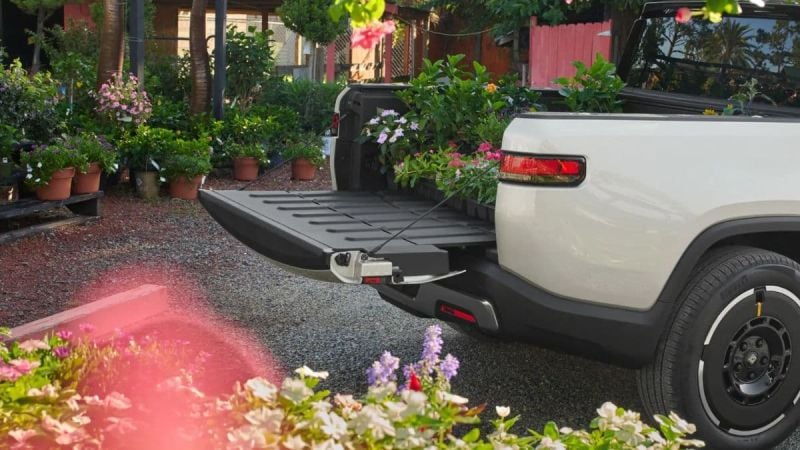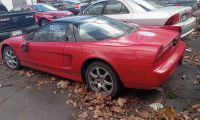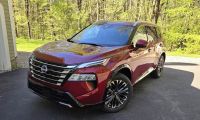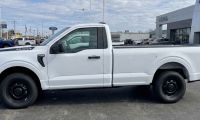This evening, while strolling through the “RIVIAN Electric Vehicles Discussion” group on Facebook, I stumbled upon a post that truly resonated with me as an R1T owner and automotive journalist. After two years of owning Rivian’s highly praised electric truck, one owner, Ryan Lebster, voiced concerns that I, and many others in the community, have also quietly carried. Ryan’s frustrations echo a larger sentiment among Gen 1 R1T owners who expected Rivian’s Driver+ system to evolve meaningfully over time but instead feel left waiting.
Ryan posted saying "After two years of ownership, I'm still waiting for meaningful improvements in my R1T's autonomous driving, especially when it comes to dealing with glare, rain, and basic road coverage," Ryan writes. "Aside from re-engagement after a blinker lane change, nothing has improved. The system still lacks reliability in lane nudging on mapped roads and fails to execute routes smoothly. I drove a Ford Expedition most of last month and was shocked at how much better its driver assist performed on all roadways. The Expedition handled everything from city streets to highways more confidently than my Rivian. It makes me wonder if I made the right decision."
Why Is This a Problem?
For many owners, Rivian’s Driver+ system was one of the key selling points, especially when competing against established systems like Tesla’s Full Self-Driving (FSD), GM’s Super Cruise, and Ford’s BlueCruise. Two years later, the lack of substantial updates, particularly in areas like inclement weather driving, lane precision, and route execution, has left owners questioning the value of the system, especially when seeing other brands’ rapid advances in Advanced Driver Assistance Systems (ADAS).
While Ryan’s experience might feel isolating, the comments on his post revealed a wide spectrum of reactions and useful perspectives from other Rivian owners.

Community Reactions: A Mixed Bag
Will, another group member, commented, offering some insight into Rivian's hardware limitations. “You won’t get automatic lane changes with Gen 1. Gen 2 features better cameras, higher resolution, and faster processors, allowing for more advanced ADAS improvements,” Will explains. This hints at a hard reality: for those of us with Gen 1 vehicles, expecting Tesla-like self-driving capabilities may not be realistic unless we upgrade to a newer model.
Jennifer, who owns a Gen 2 R1S, shared a contrasting opinion: “I think it's great. I have a Gen 2 R1S, and my husband has a Tesla Model S with Full Self-Driving. Sure, the Rivian doesn’t have full self-driving, but for me, it has enough. It drives itself on the highway, which is where I would mostly use it anyway. If you really care about never driving, then get a Tesla. If you enjoy driving and prefer limited self-driving, then a Rivian is for you. Cars become outdated over time, so if you want improved software, you’ll always need or want to upgrade to a newer model.”
Jennifer’s perspective reminds us that for some owners, Driver+ may already meet their expectations, particularly if they’re only looking for highway assistance. But for those who expected ongoing development and feature parity with competitors, the disappointment is understandable.
Matt, however, brought a third perspective, one that reflects a growing trend among frustrated owners: aftermarket solutions. “I understand your disappointment with the Gen 1 driver assistance, and unfortunately, it’s not going to improve much. I’ve installed a Comma 3X from Comma AI, which offers functionality similar to GM Super Cruise or Ford BlueCruise. It works on any road, in any weather, and even performs automatic lane changes. Overall, it’s significantly better than the factory system,” Matt wrote.
What Are Rivian Owners Really Looking For?
When we buy a vehicle as technologically advanced, and expensive, as a Rivian R1T, we expect a system that grows with us. Rivian has often touted Driver+ as a "hands-free" system in development, but progress feels sluggish. Owners like Ryan want improvements in:
-
Lane keeping and nudging accuracy
-
Weather handling (glare, rain, snow)
-
Advertising Reliable route planning and execution
-
Automatic lane changing
-
Highway and city compatibility
These are not outlandish demands; they are features already present in Ford’s BlueCruise, GM’s Super Cruise, and Tesla’s FSD. If a Ford Expedition can outperform a Rivian R1T in driver assistance today, that’s a red flag that Rivian needs to address.
For those curious about how Rivian’s newer R1S Tri-Motor performs on long trips, there’s a fantastic story on how a Rivian R1S Tri-Motor handled a road trip from Palm Springs to Las Vegas with top comfort and technology. It highlights what newer Rivians are capable of today.
Additionally, for those who are focused on how Rivian vehicles handle long-distance travel and public charging, there’s a great piece on a 1,300-mile trip in a Rivian R1S using Tesla Superchargers, showing how Rivians can hold their own on infrastructure compatibility.
For anyone curious about some of the new tools included in the Gen 2 vehicles, like Rivian's onboard air compressor, this article covers whether the air compressor is actually usable in real-life situations.
When considering whether to upgrade to a newer Rivian model, this review of the 2025 Rivian R1S Tri-Motor and its regenerative braking performance offers insight into performance improvements and home charging options.
And if you’re still curious about how Rivian performs on a cross-country road trip, here’s an account of a US-wide trip in an R1S using Tesla adapters and having worry-free performance.
My Personal Take as an Observer
Although I don’t own a Rivian myself, I’ve been closely following the brand and its developments, especially as an automotive journalist. From the outside looking in, I can’t help but be both impressed and concerned. Rivian has built one of the most exciting electric trucks on the market, with unmatched off-road prowess and design. But when it comes to autonomous driving, I see a pattern that feels concerning. Listening to real owners like Ryan, and watching how other automakers are pulling ahead in driver assistance technology, makes me wonder if Rivian is risking its reputation by falling behind in this critical area. While I’d love to recommend a Rivian to readers and friends, I hesitate when it comes to autonomy. If autonomous driving is a top priority, other brands may offer better peace of mind, at least for now.
Final Thoughts: The Moral of the Story
If there’s one takeaway from Ryan’s post and the broader discussion, it’s that as consumers, we should buy vehicles for what they can do today, not for promises about tomorrow. Companies may have the best intentions, but hardware and software limitations are real. Rivian has built an amazing truck, but for those who expected it to match Tesla and Ford in autonomy, patience is running thin.
What has your experience been with Rivian's Driver+ system? Have you found it reliable or disappointing? What are your thoughts on aftermarket options like Comma AI?
Please share your thoughts in the comments below.
Narek Hareyan is a young automotive journalist with experience in a golf cart dealership and an interest in the automotive industry. Follow Narek on X for daily news coverage about cars.











